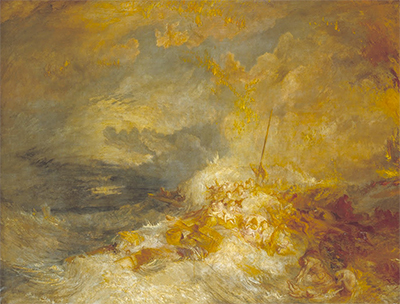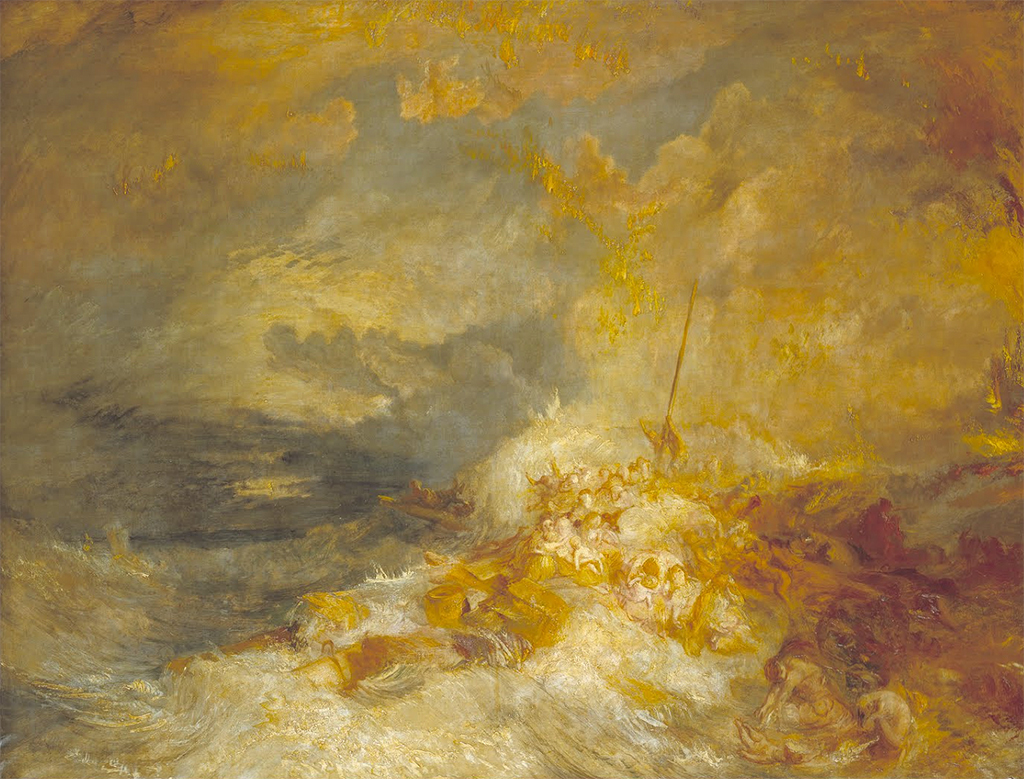This extraordinary painting from JMW Turner is dated at 1835 and is now a part of the impressive collection of the Tate, UK. It is one of the artist's most famous seascape paintings.
The scene has not been as well documented as the artist's most well known pieces, but has still received a reasonable level of exposure within his career. It is the romanticist elements which place it high amongst his work in the seascape genre, where the powerful impact of nature is captured with an extraordinary use of light and colour, with the sea and sky combining into a single, chaotic flurry of energy. It has gone on to become known as A Disaster at Sea by some, and Fire at Sea by others. The two titles basically describe what we are looking at within the composition.
The artwork was never exhibited, which is unusual for Turner as this was the normal route with which new paintings would be unveiled for the first time. It is likely, therefore, that the painting was not actually fully finished, though it is clearly at a very advanced stage. One cannot be sure as to what was left to be done, perhaps only a few touches of darker and lighter tones in order to add depth to the completed work. The horror of the disaster is certainly clear for everyone to see, with a detailed collection of figures struggling to keep themselves afloat in a scenario which appears to be without any great hope.
Géricault's Raft of the Medusa is one of the most respected seascapes in history and elements of its influence can be seen in this picture from Turner. Both were highly talented romanticist artists with whom the mere reflection of reality was never enough - they wanted to carry across emotion and energy into their work and both are now respected for the artistic qualities that they held. Turner's work is of the Amphitrite off Boulogne in 1833 and he produced several sketchbooks in which he practised important elements of this final work. In a similar way to Slave Ship, we find humans discarded by their 'owners', which in this case is the ship's captain who leaves convicts to fend for themselves.





